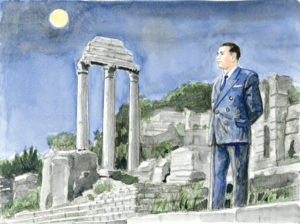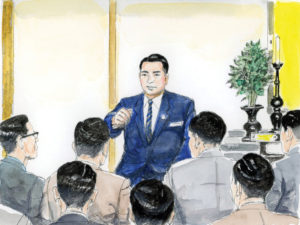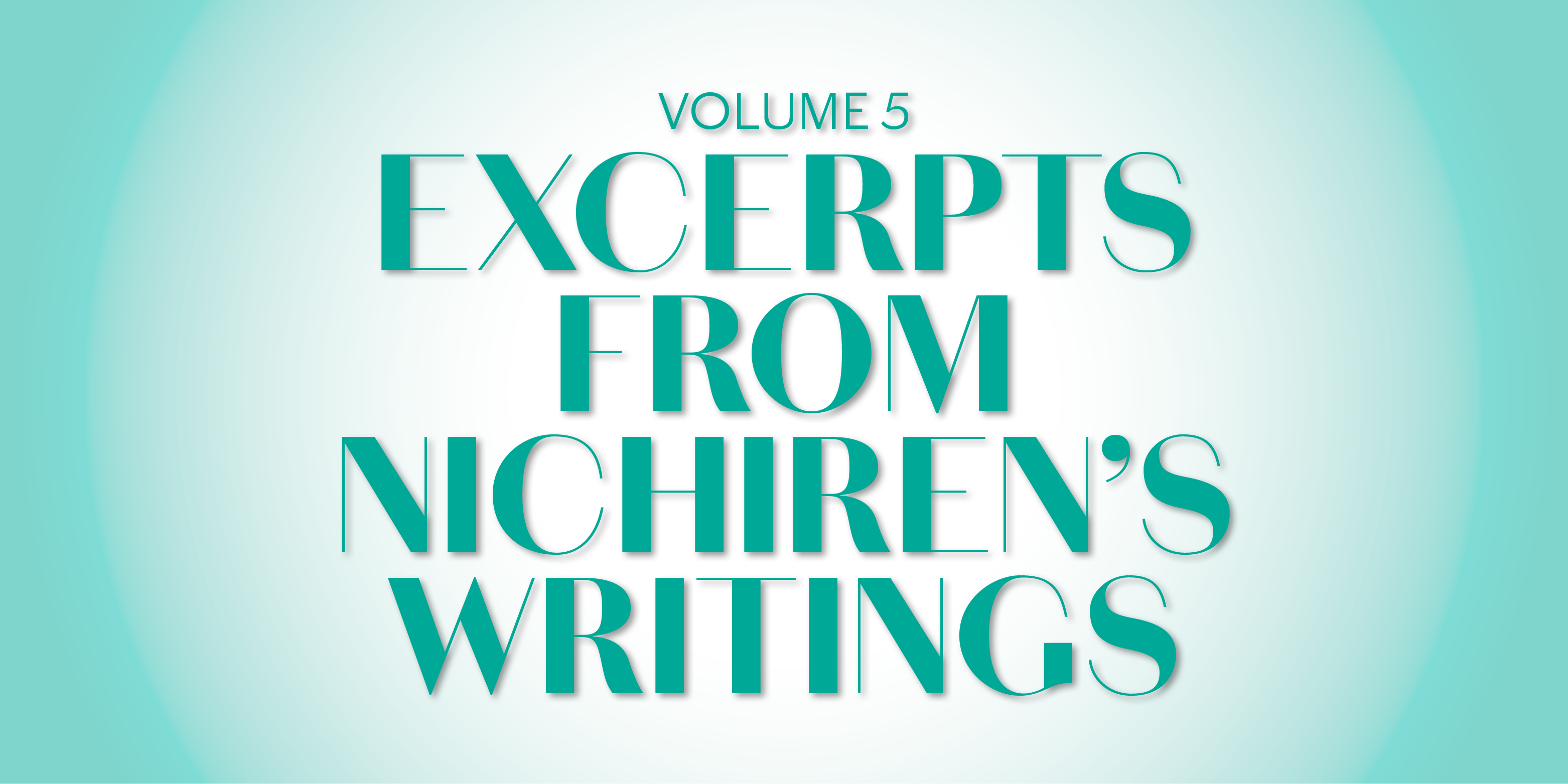This installment, published in the February 20, 2019, issue of the Seikyo Shimbun, focuses on passages from Nichiren Daishonin’s writings that Ikeda Sensei discussed in volume 5 of The New Human Revolution.
Passage 1ASSAGE 1
“If Nichiren’s compassion is truly great and encompassing, Nam-myoho-renge-kyo will spread for ten thousand years and more, for all eternity.” (“On Repaying Debts of Gratitude,” The Writings of Nichiren Daishonin, vol. 1, p. 736)
The Land of the Mystic Law Shall Never Perish

Photo by Seikyo Press.
During his visit to Italy in October 1961, Shin’ichi Yamamoto strolled through the ancient ruins of the Roman Forum while pondering the SGI’s mission.
It probably never occurred to the ancient Romans that their proud empire might one day perish, Shin’ichi Yamamoto thought to himself. Prosperity and decline are an inescapable part of human existence. Only a little more than 500 years after it began, imperial Rome, which all had thought would last forever, disappeared with the disintegration of the Western Roman Empire.
But Nichiren Daishonin wrote, “If Nichiren’s compassion is truly great and encompassing, Nam-myoho-renge-kyo will spread for ten thousand years and more, for all eternity” (WND-1, 736). The Mystic Law is eternal. Likewise, peace and prosperity for humanity that is built upon the foundation of the Mystic Law must also endure for eternity. The Mystic Law can be described as a great spiritual realm where humanity has triumphed over the domination of military might and authoritarian power.
The Soka Gakkai’s mission was to build this great spiritual realm—the Land of the Mystic Law—in the heart of each individual and to construct there an Eternal City of human harmony. To open the door to a new, more hopeful future for humanity, this had to be achieved. Vowing to accomplish this as he gazed up at the moon over Rome, Shin’ichi silently composed a poem in his mind:
Standing here
In the ruins of Rome
I am convinced
The Land of the Mystic Law
Shall never perish.
(The New Human Revolution, vol. 5, pp. 126–27)
Passage 2PASSAGE 2
“The lion king fears no other beast, nor do its cubs.” (“On Persecutions Befalling the Sage,” WND-1, 997)
The Undaunted Path as Mentor and Disciples

Photo by Seikyo Press.
In 1962, Shin’ichi Yamamoto was fully exonerated of all charges filed against him in the Osaka Incident. After the verdict was passed, he returned to the Kansai Headquarters and shared with the leaders about the Soka Gakkai spirit.
“I fear nothing. Just as the Daishonin proclaimed in the midst of great persecution, ‘My present exile is not because of any secular crime’ (“Letter from Sado,” WND-1, 303), I have done nothing wrong. That is why the authorities have schemed to frame me with a crime I did not commit. I will fight an uncompromising battle against the insidious workings of power. I share the Daishonin’s conviction when he said, ‘Still I am not discouraged’ (“The Essentials for Attaining Buddhahood,” WND-1, 748). We are waging a struggle for human rights—for the victory of the people and the triumph of humanity.”
Shin’ichi’s words were like the roar of a lion king, now broken free of the shackles of oppression. His eyes gleamed with unbending resolve.
The Soka Gakkai’s history was one of ceaseless struggle against the devious forces of authoritarianism. This spirit had remained unchanged from the days of its first president, Tsunesaburo Makiguchi …
This is also why the Soka Gakkai has been relentlessly dogged by persecution.
However, this was the Soka Gakkai’s destiny, the path upon which it was ordained to advance as a religious organization genuinely committed to human dignity.
The Daishonin writes, “The lion king fears no other beast, nor do its cubs” (“On Persecutions Befalling the Sage,” WND-1, 997). To spread the Mystic Law is to follow the lion’s path. Only those of dauntless courage, conviction and integrity can undertake the rigorous challenge of propagating Nichiren Buddhism. The path of the lion is also that of mentor and disciple, a path that can only be actualized by disciples who make their mentor’s spirit their own. (NHR-5, 305–07)
What Is Absolute Happiness?
In recent years, various surveys have made attempts to measure the degree of happiness that people feel. For instance, the United Nations publishes its annual World Happiness Report, which includes articles on the causes of happiness and misery, and national happiness rankings that are based on how respondents in various countries rate their own lives based on various life factors. This U.N. report assesses many factors to rank the overall happiness scores of the 150 countries it surveys. Researchers look at six key variables that include real GDP per capita and freedom to make life choices, recognizing that definitions of happiness vary from country to country. In volume 5 of The New Human Revolution, one of the young women’s leaders speaks about happiness at the 9th Young Women’s Division General Meeting, based on second Soka Gakkai President Josei Toda’s explanation of absolute happiness versus relative happiness. Relative happiness comes from external sources, like economic abundance and social status. On the other hand, absolute happiness is based on establishing a state of life in which we are never defeated by obstacles or difficulties, and living itself is a source of the greatest joy. In the “Victory” chapter, we find the following explanation: “Happiness for a woman—for anyone—comes not from having a formal education, from wealth or from marriage. It begins with having the strength to challenge and conquer one’s weakness” (NHR-5, 197). Buddhism teaches that happiness is never found in external sources. It can only be found within our hearts. When we chant Nam-myoho-renge-kyo, strive in our daily Buddhist practice and joyfully carry out our SGI activities, we are opening the doors to our inner palace of absolute happiness.
You are reading {{ meterCount }} of {{ meterMax }} free premium articles

